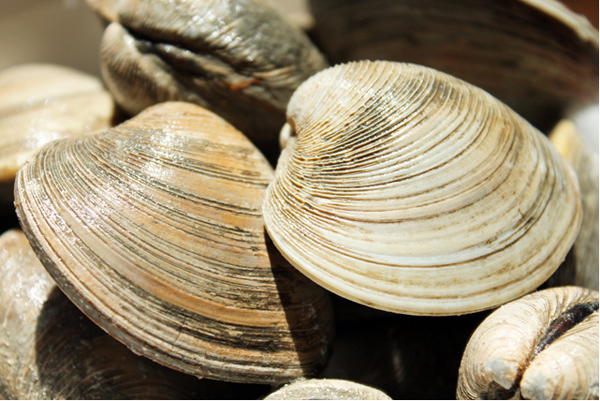Updated: How Many Clams Are Dead Clams Worth?
 Littleneck photo by jessica.dailey on Flickr.
Littleneck photo by jessica.dailey on Flickr.
No, that’s not some phrase from Pirates of the Caribbean: Dead Clams Chest. It’s the basis of a lawsuit East Boston fisherman have filed against Massport and one of Logan Airport’s fueling companies after a 2010 fuel spill basically decimated the Eastie industry, according to the The East Boston Times-Free Press. The fishermen quoted in the story claim the usually fertile clam beds surrounding Logan are now completely decimated since all the clams died of cancer. That’s right, clam cancer.
All this apparently stems from an incident in which a fuel-truck operator working for Swissport jammed the fail-safe mechanism on the pump then went back to his truck and had a little nap. That reportedly led to a massive spill and Swissport officials wouldn’t say acknowledge how much jet fuel went onto the tarmac. The Times-Free Press tracked it some documents:
While Swissport was also unsure how much fuel was spilled, according to the records obtained by the East Boston Times the documents showed that 463 gallons of a fuel/water mixture, 18 cubic yards of oily absorbents and 4 cubic yards of oily sludge was quietly cleaned up by Clean Harbor and sent to its facility in Braintree.
Logan is equipped with various drainage culverts to move rainwater from the runways, and sometimes small amounts of deicer or fuel are flushed into the harbor, such is the price of operating an international airport. But in this case, it seems like a much bigger event. Last year, a group of fishermen petitioned Massport and Swissport to offer a payout for lost wages. Apparently, the 90-day response period the fishermen sought expired, and so off to the courts we go.
Clammers say they used to haul up 1,000 pounds in a good day, and now bupkes.
Update August 8, 2012: A spokesman for MassPort wrote me to challenge many of the facts in the East Boston Timesstory:
Regarding your “How Many Clams……” post, please be aware the East Boston Times article is a little misleading in some respects and simply wrong in others. It misleads by implying “463 gallons of fuel/oil mixture, 18 cubic yards of oil absorbents and four cubic yards of oily sludge were quietly cleaned up by Clean Harbors’’ was cleaned up from the harbor, when, in fact, it was contained within an oil/water separator on the airfield and never got into the harbor. A sheen was detected within the containment boom that surrounds the north outfall. As you may know, the boom did what it was supposed to do – contain the sheen.
As the clammers are aware, Massport undertook an extensive sediment analysis of the North Outfall adjacent clam beds in 2011. The results showed no “fresh’’ jet fuel chemical fingerprints in the 45 sediment samples collected. “Weathered’’ jet fuel was detected only within the footprint of a 1994 spill area near the North Outfall. The Total Petroleum Hydrocarbons concentrations found in the sediment samples were consistent with concentrations routinely measured in other urban/heavily developed areas such as other parts of Boston Harbor and Gloucester.
Finally, we are not aware of any federal lawsuit being filed against Massport by clammers.


